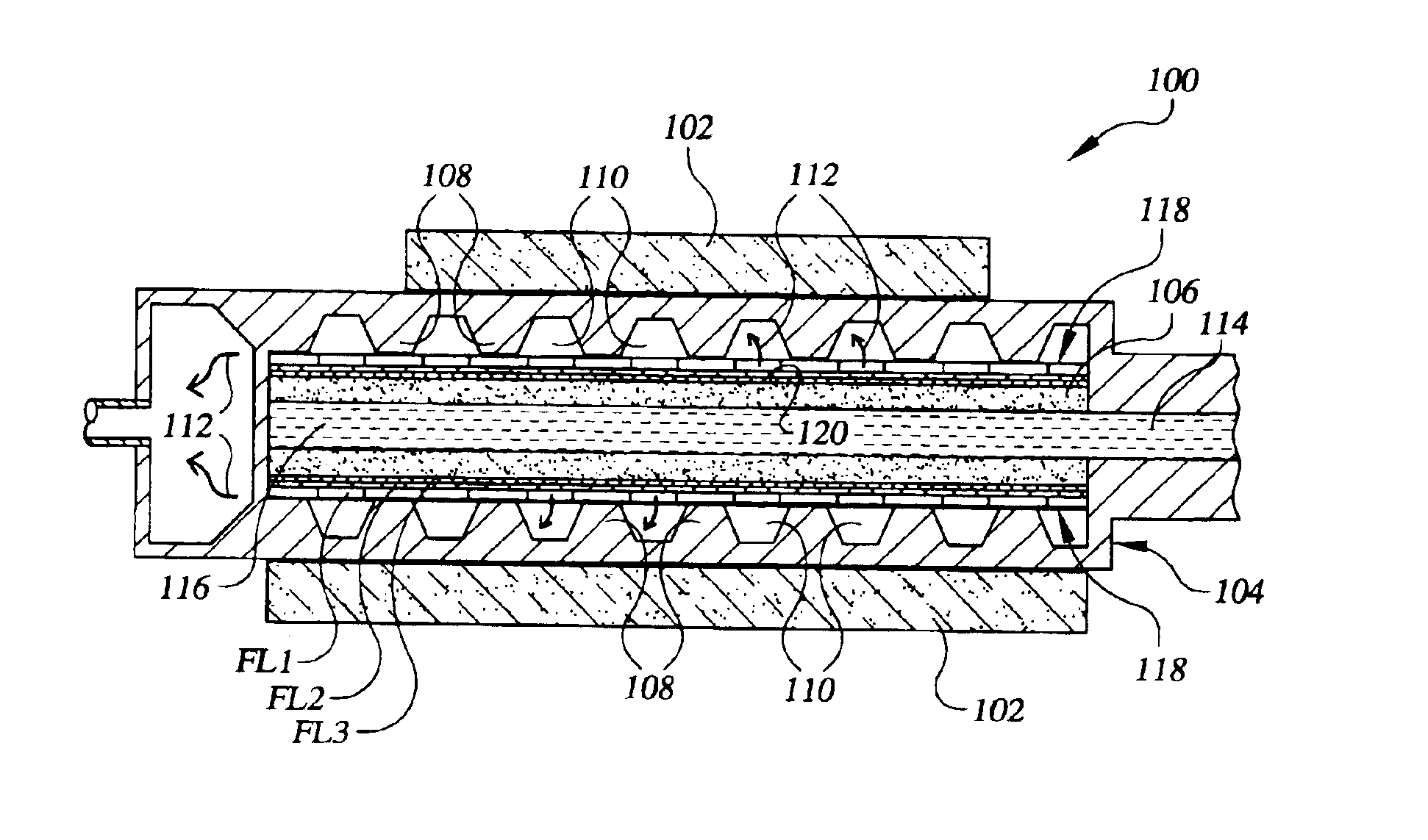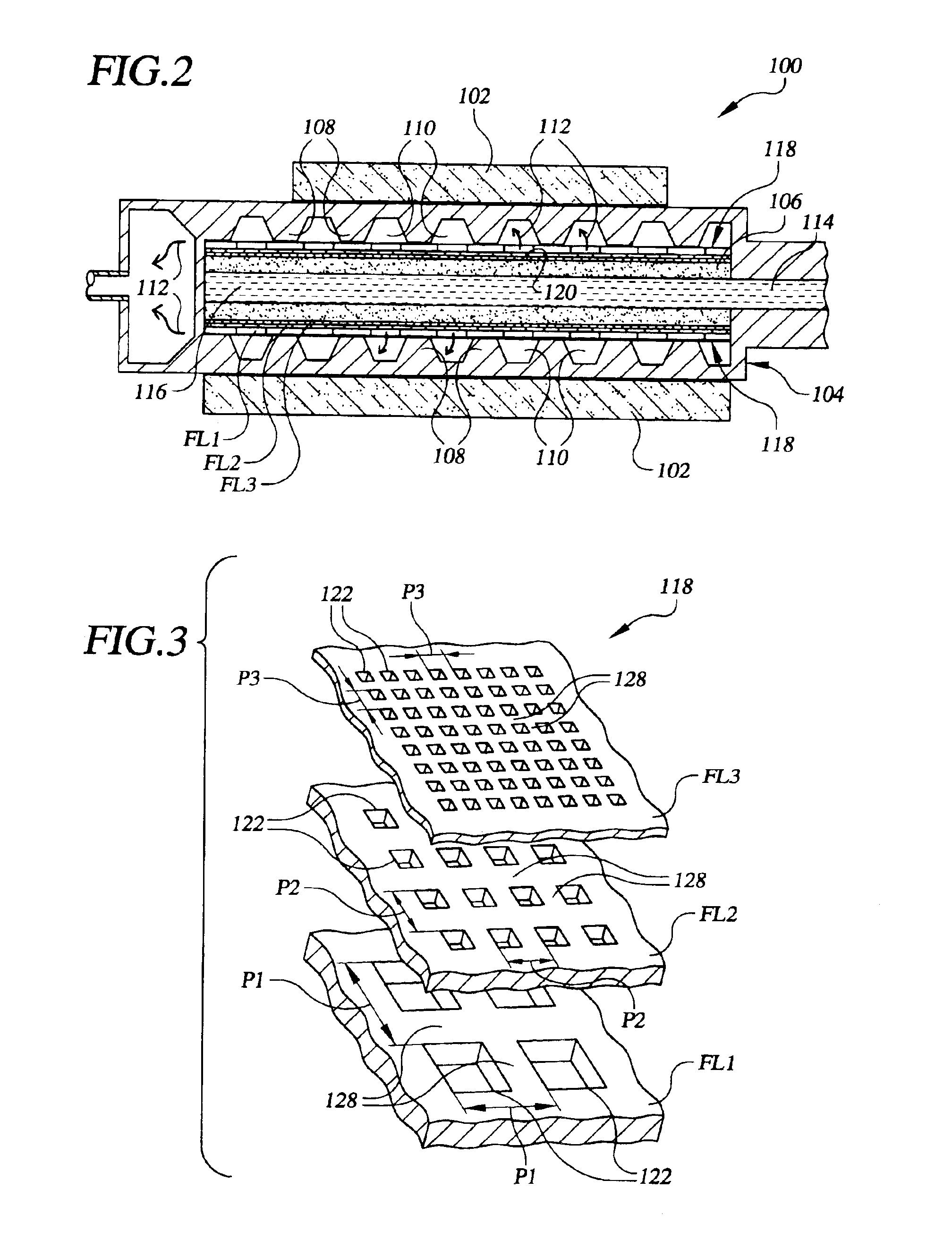Capillary evaporator
- Summary
- Abstract
- Description
- Claims
- Application Information
AI Technical Summary
Benefits of technology
Problems solved by technology
Method used
Image
Examples
Example
DETAILED DESCRIPTION OF THE DRAWINGS
Referring now to the drawings, FIG. 2 shows, in accordance with the present invention, a capillary evaporator, which is identified generally by the numeral 100. Like evaporator 20 discussed in the background section, above, capillary evaporator 100 may be incorporated into a two-phase heat-transfer system, such as the loop heat pipe (LHP) and capillary pumped loop (CPL) systems mentioned above, among others. Capillary evaporator 100 may be any size and / or shape suitable for interfacing with any of a variety of heat sources, such as heat source 102, that is desired to be cooled. Those skilled in the art will appreciate the variety of shapes and / or sizes of capillary evaporator 100 that may be made in accordance with the present invention and that the various capillary evaporators shown and described in the present application are generally provided only to illustrate the various aspects of the present invention and not to limit the scope of the inv...
PUM
| Property | Measurement | Unit |
|---|---|---|
| Time | aaaaa | aaaaa |
| Thickness | aaaaa | aaaaa |
| Thickness | aaaaa | aaaaa |
Abstract
Description
Claims
Application Information
 Login to View More
Login to View More - R&D
- Intellectual Property
- Life Sciences
- Materials
- Tech Scout
- Unparalleled Data Quality
- Higher Quality Content
- 60% Fewer Hallucinations
Browse by: Latest US Patents, China's latest patents, Technical Efficacy Thesaurus, Application Domain, Technology Topic, Popular Technical Reports.
© 2025 PatSnap. All rights reserved.Legal|Privacy policy|Modern Slavery Act Transparency Statement|Sitemap|About US| Contact US: help@patsnap.com



